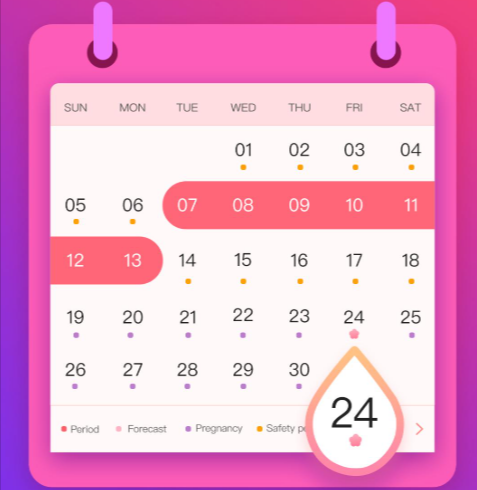Pantoprazole
What is pantoprazole?
Pantoprazole is a proton pump inhibitor that decreases the amount of acid produced in the stomach.
Pantoprazole is used to treat erosive esophagitis (damage to the esophagus from stomach acid caused by gastroesophageal reflux disease, or GERD) in adults and children who are at least 5 years old. Pantoprazole is usually given for up to 8 weeks at a time while your esophagus heals.
Pantoprazole is also used to treat Zollinger-Ellison syndrome and other conditions involving excess stomach acid.
Furosemide side effects
Common furosemide side effects may include:
- diarrhea, constipation, loss of appetite;
- numbness or tingling;
- headache, dizziness; or
- blurred vision.
Serious furosemide side effects
Get emergency medical help if you have signs of an allergic reaction to furosemide (hives, difficult breathing, swelling in your face or throat) or a severe skin reaction (fever, sore throat, burning eyes, skin pain, red or purple skin rash with blistering and peeling).
Furosemide may cause other serious side effects. Call your doctor at once if you have:
- a light-headed feeling, like you might pass out;
- ringing in your ears, hearing loss;
- muscle spasms or contractions;
- pale skin, easy bruising, unusual bleeding;
- high blood sugar – increased thirst, increased urination, dry mouth, fruity breath odor;
- kidney problems – swelling, urinating less, feeling tired or short of breath
- signs of liver or pancreas problems – loss of appetite, upper stomach pain (that may spread to your back), nausea or vomiting, dark urine, jaundice (yellowing of the skin or eyes); or
- signs of an electrolyte imbalance – increased thirst or urination, constipation, muscle weakness, leg cramps, numbness or tingling, feeling jittery, fluttering in your chest
Before taking this medicine
Heartburn can mimic early symptoms of a heart attack. Get emergency medical help if you have chest pain that spreads to your jaw or shoulder and you feel anxious or light-headed.
You should not use this medicine if:
you also take medicine that contains rilpivirine (Edurant, Complera, Juluca, Odefsey);
if you had breathing problems, kidney problems, or a severe allergic reaction after taking pantoprazole in the past; or
you are allergic to pantoprazole or similar medicines (lansoprazole, omeprazole, Nexium, Prevacid, Prilosec, and others).
Tell your doctor if you have ever had:
low levels of magnesium in your blood;
lupus; or
osteoporosis or low bone mineral density.
You may be more likely to have a broken bone while using pantoprazole long-term or more than once per day. Talk with your doctor about ways to keep your bones healthy, especially if you are an adult over 50.
It is not known whether this medicine will harm an unborn baby. Tell your doctor if you are pregnant or plan to become pregnant.
You should not breast-feed while using this medicine.
Pantoprazole is not approved for use by anyone younger than 5 years old.
Dosing information
Usual Adult Dose for Erosive Esophagitis:
Treatment of Erosive Esophagitis:
40 mg orally once a day for up to 8 weeks; however an additional 8 weeks may be considered for patients who have not healed after the initial treatment. Safety and efficacy beyond 16 weeks of therapy have not been established.
Maintenance of Healing of Erosive Esophagitis:
40 mg orally once a day. Controlled studies have been limited to 12 months of pantoprazole therapy.
Usual Adult Dose for Gastroesophageal Reflux Disease:
Parenteral: 40 mg once a day for 7 to 10 days, administered via intravenous infusion over a period of 15 minutes. Intravenous therapy should be discontinued as soon as the patient is able to resume oral therapy.
Oral: 40 mg orally once a day, for short-term administration (up to 8 weeks); however an additional 8 weeks may be considered for patients who have not healed after the initial treatment. Safety and efficacy beyond 16 weeks of therapy have not been established.
Usual Adult Dose for Duodenal Ulcer:
Study (n=54)
40 mg orally once a day, dose was increased every 12 weeks by 40 mg increments to a maximum of 120 mg per day, for 28 weeks. Data have revealed that monotherapy with daily doses of 40 mg have been associated with complete duodenal ulcer healing in up to 87% and 94% of patients after 4 weeks and 8 weeks respectively.
Usual Adult Dose for Gastric Ulcer:
40 mg orally once a day. Data have revealed that monotherapy with daily doses of 40 mg have been associated with complete gastric ulcer healing in up to 87% and 97% of patients after 4 weeks and 8 weeks respectively.
Usual Adult Dose for Helicobacter pylori Infection:
Study (n=242) – Triple therapy:
40 mg orally twice daily for 7 days, commonly in conjunction with clarithromycin and either amoxicillin or metronidazole to eradicate Helicobacter pylori, followed with 40 mg pantoprazole orally once daily until day 28. Triple therapy has resulted in eradication rates of greater than 95%.
The QUADRATE Study (n=405) – Quadruple therapy:
40 mg orally twice daily for 7 days, concomitantly with bismuth subcitrate and tetracycline, both four times daily, and metronidazole 200 mg three times daily and 400 mg at bedtime. Helicobacter Pylori eradication was achieved in 82% of patients.
Usual Adult Dose for Zollinger-Ellison Syndrome:
Parenteral: 80 mg every 12 hours, administered by 15-minute infusion. Daily doses higher than 240 mg administered in equally divided doses by 15-minute infusion, or administered for more than 6 days have not been studied.
Oral: 40 mg twice daily, to a maximum of 240 mg per day. Some patients have received treatment with pantoprazole for more than 2 years.
Usual Adult Dose for Stress Ulcer Prophylaxis:
Study (n=21) – Stress Ulcer bleeding prophylaxis in the Critical Care Setting:
80 mg twice daily, as a bolus infusion over a period of 15 minutes, to a maximum daily dose of 240 mg, divided into three equal doses.
Study (n=20 ) – Peptic Ulcer rebleeding prophylaxis after hemostasis in the Critical Care Setting:
80 mg IV bolus, followed by continuous infusion of 8 mg/hr for 3 days, after which therapy may be continued with an oral PPI.
Usual Adult Dose for Peptic Ulcer:
Study (n=21) – Stress Ulcer bleeding prophylaxis in the Critical Care Setting:
80 mg twice daily, as a bolus infusion over a period of 15 minutes, to a maximum daily dose of 240 mg, divided into three equal doses.
Study (n=20 ) – Peptic Ulcer rebleeding prophylaxis after hemostasis in the Critical Care Setting:
80 mg IV bolus, followed by continuous infusion of 8 mg/hr for 3 days, after which therapy may be continued with an oral PPI.
Interaction
Health Tools
Related/Similar Drugs
Magnesium Oxide
Home What is magnesium oxide? Magnesium oxide is used as a supplement to maintain adequate magnesium in the body. Magnesium […]
Pantoprazole
Home What is pantoprazole? Pantoprazole is a proton pump inhibitor that decreases the amount of acid produced in the stomach. Pantoprazole […]




